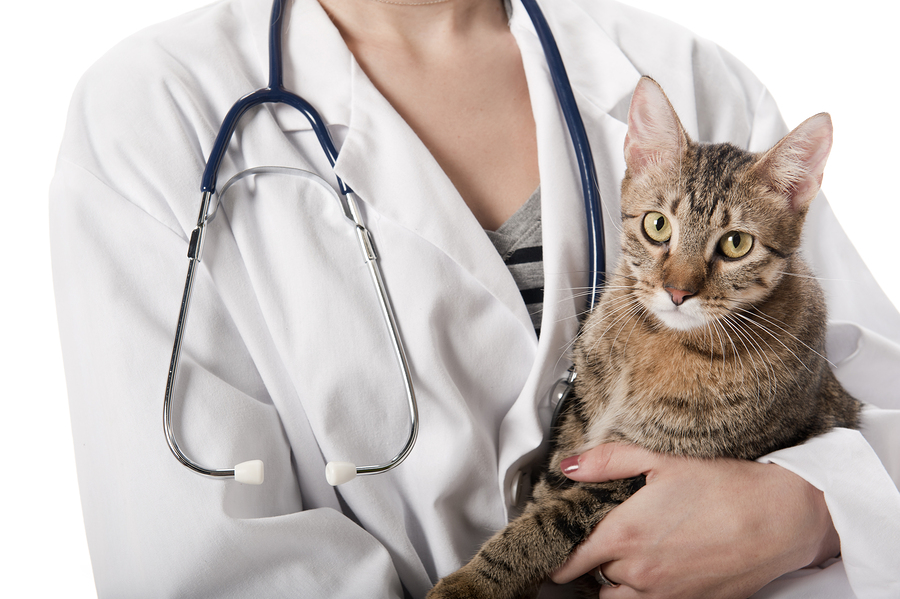When I worked as a vet tech many years ago, we didn’t routinely “take pets to the back” for treatment. Emergency visits, or pets not easily handled, were the exceptions. But more often than not, dogs and cats had their temperatures taken, vaccines administered, routine blood and stool samples procured, all while in the presence of the owners.
Nowadays when visiting the vet, though, your dog or cat may be whisked away out of sight for treatment. My own veterinarian does this with my animals, and I have no problem with the practice. Often there are reasons veterinarians prefer to treat in the back. But maybe you’re rightly concerned about being separated. If you’d rather stay with your cat or dog, here’s what to consider and ways to suggest compromises.
Why Vets Take Pets to the Back
Like human kids, some pets act up with an audience but calm down with gentle veterinary handling. That means the treatment takes less time, which means a quicker and more efficient visit. Your cat or dog is back in your arms more quickly.
Every pet is different, though. If your pet feels more secure on your lap or with you offering a treat during the exam, say so. The staff should be willing to see if this works for your situation.
But be honest if you’re unable to help safely restrain your pet in a stress-free manner. The staff may rightly have concerns about liability issues in the face of bite injuries. Holding a pet incorrectly could actually increase the cat or dog’s stress and get you bitten, too!
Your pets feel your anxiety and that can increase their stress level as well. So if you hate the sight of needles, or your dog feels protective with you near, the vet may have concerns. Be open to adjusting to your pet’s needs.
My Bravo-Dawg now weighs over 100 pounds. That means he won’t easily fit on the exam room table, and there’s barely room to turn around to do treatments with a vet, assistant, and myself in the room. That can make big dogs feel trapped and increase stress. More space, proper supplies, good lighting, a sink, and other equipment may be more easily accessible in the back. In some cases, your vet may be willing for you to come to the back, too. But with procedures such as x-rays or surgery that probably isn’t advisable.
Working With Your Vet
In many cases, the practice of taking pets to the back has simply become a habit. Veterinarians today like clients who ask questions and want to know how best to care for their animals. Find out why the doctor prefers taking your pet to the back and suggest alternatives.
Let your vet know if you believe your cat or dog does better or worse with you present. Do you hate the sight of blood, or are you an experienced registered nurse, medical doctor, or pet professional? If you’re familiar with Fear Free handling, let them know—and come prepared with some tasty treats or other options that help make the staff’s job easier and your pet happier.
When the doctor can explain why taking the pet “to the back” means better care and less pet stress, be open to this option. You should be able to trust your veterinarian and staff, and vice versa, for the benefit of your cats and dogs.
You and your pet are not like any other client. Being flexible—on both sides—can only help reduce your own potential stress, and that of your beloved cats and dogs. If you’re not happy with the arrangement, and have worked hard to come to middle ground, you can seek out a Fear Free practice that’s more open to the needs of yourself and your animal companions.
This article was reviewed/edited by board-certified veterinary behaviorist Dr. Kenneth Martin and/or veterinary technician specialist in behavior Debbie Martin, LVT.








